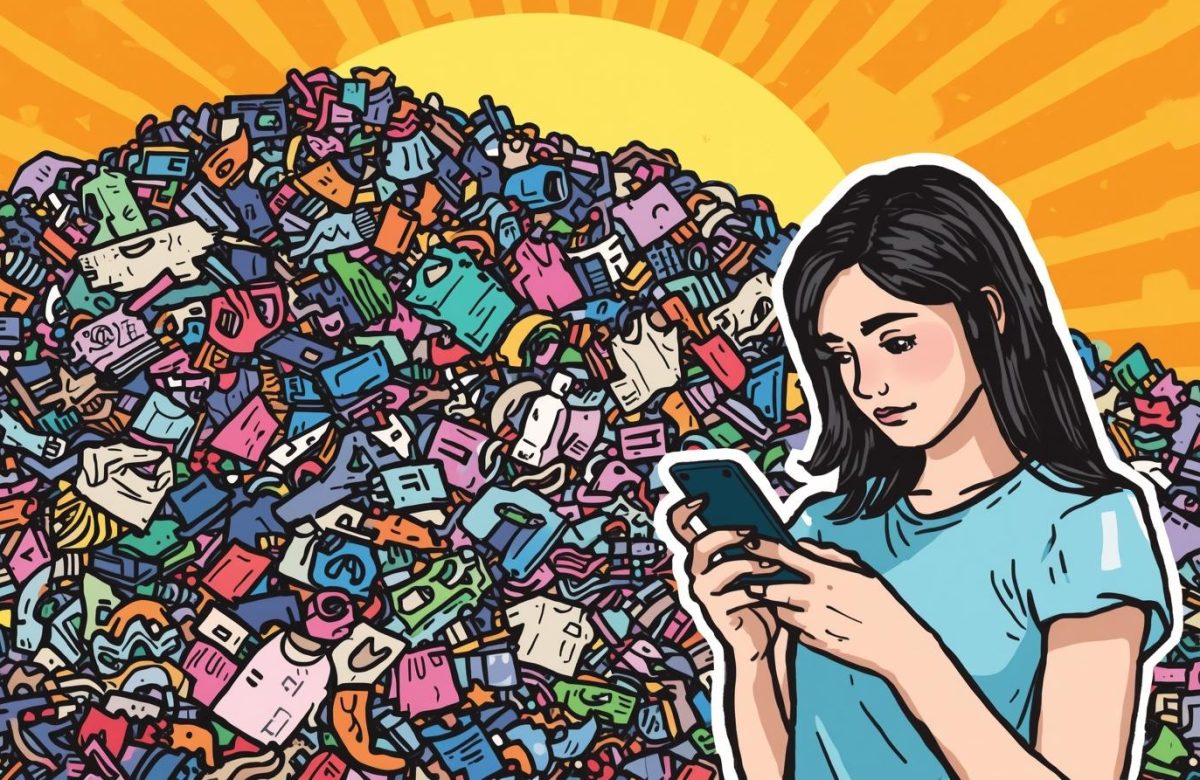Have you considered purchasing the Matcha Labubu Dubai Chocolate Polka Dot Bubble Skirt JerseyWithAMiniSkirt? What about the Leopard Print Blind Box Sonny Angel Rhode Customizable Charm Necklace? Surely you need a Thrifted Vintage Hollister Bag, with 17 watches that don’t work, as do all of us.
Microtrends have been quickly gaining popularity via social media and the rise of consumer culture within the last five years, and it is now worse than ever. Current microtrends have compressed the traditional 20-year trend cycle into a much shorter lifespan. Their popularity rises fast but falls rapidly. The rise of microtrends can be attributed to social media, and more specifically, influencer marketing.
Influencers are in constant competition for the attention of their audience. The more views they have, the more money they earn. The need for views forces influencers to become more inventive with their content and convincing with their marketing tactics.
Unfortunately, this vicious cycle can negatively affect viewers who end up falling victim. Say you were influenced by your personal favorite influencer to buy an entire new wardrobe, because “the clean girl aesthetic is out.” You practically run to the place you buy your cheapest and quickest clothing, some online company like SHEIN, CIDER or Zara. You spend hours looking for the perfect summer wardrobe yourself and pay an extra 10 bucks to have it delivered straight to your house.
By the time your new clothes arrive, the trend is already out, and influencers have moved on to the next big thing. These influencers portray that you need a certain product to “keep up.” This is in, this is out, and this is the Next Biggest Thing of 2025.
There is nothing that can truly be done to stop it, but that doesn’t mean it doesn’t affect the quality of our clothing and the astonishing amount of waste. All of these useless, one-time-use, bad quality items end up in landfills, adding to the insane overconsumption issue being brought to light in 2025.
These rapid-speed trends became especially popular during COVID-19. Impulse buying skyrocketed because of a need for instant gratification and comfort in a time when everything else was fluctuating. Gen-Z got hit especially hard with the wave of microtrends, and it was only natural that the appeal of fast fashion skyrocketed, given its affordability and power to mirror trends.
Microtrends and fast fashion are directly intertwined. Once brands like SHEIN, Zara and H&M have a glimpse into a trend, the turnaround until product availability is within three weeks. According to the COO of SHEIN, Molly Miao, 700 to 1000 new items of clothing are released to the website every day. For the sake of quantity, quality is sacrificed.
Cheap, fossil-fuel-based synthetic fibers such as polyester, nylon, spandex and acetate are used to produce the clothing we buy from these brands. This overproduction of cheap goods leads to over 101 million tons of textile waste annually. Most of this waste ends up in landfills, where decomposition pollutes the environment.
Consciously deciding if a purchase is worth it is becoming increasingly crucial, as is shifting the mindset of the general public. Do you need this? How long will you realistically wear it? Where does it go when you decide you no longer like it?
Maybe the next time you run to a fast-fashion website to rebuild your entire closet from the ground up, consider these questions and think about the way your consumption is affecting the world.












